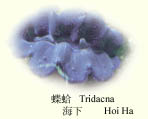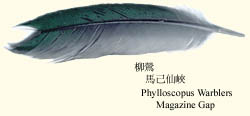| Indoor Air Quality (IAQ) |
Indoor air quality is perhaps more important to many of us than outdoor air. Studies show
that we spend 70% of our lives in an indoor environment - at work, at home, when
socialising with friends or at play. While it is a controlled environment indoors, it may
not necessarily be better in terms of air quality. The provision of quality indoor air
requires both sound understanding of the subject and professional care. |
 |
 At EMSD, we have taken a
pioneering role in this area, leading the way in establishing Indoor Air Quality
objectives from the mid 80s. These tests were conducted on a voluntary basis well before
the introduction of legislation and established standards. In Hong Kong where there is a
high incidence of respiratory diseases and where we are cocooned in air-conditioning for
much of the year, clean air can make a crucial difference to the state of our health and
the quality of our lives. A team was set up in 1994 and consisted of 12 staff, have worked
to this end, measuring indoor air-quality in government and public buildings under EMSD?
care. In 1999, this team was regionalised in line with our Trading Fund activities,
enabling them to provide more immediate and responsive services to our customers and to
cope with the upcoming IAQ certification trial scheme in which the government is taking
the lead. At EMSD, we have taken a
pioneering role in this area, leading the way in establishing Indoor Air Quality
objectives from the mid 80s. These tests were conducted on a voluntary basis well before
the introduction of legislation and established standards. In Hong Kong where there is a
high incidence of respiratory diseases and where we are cocooned in air-conditioning for
much of the year, clean air can make a crucial difference to the state of our health and
the quality of our lives. A team was set up in 1994 and consisted of 12 staff, have worked
to this end, measuring indoor air-quality in government and public buildings under EMSD?
care. In 1999, this team was regionalised in line with our Trading Fund activities,
enabling them to provide more immediate and responsive services to our customers and to
cope with the upcoming IAQ certification trial scheme in which the government is taking
the lead.
 Currently, we carry out
measurements in about 700 government buildings and over 9,000 sampling points, at least
once every two years, and annually whenever possible. Tests are carried out in four main
areas, looking at levels of carbon dioxide, radon, respirable suspended particles and
airborne bacteria. Results depend on a number of factors that are often as simple as the
number of people in the area concerned, the plants in the vicinity, the blockage of
air-vents to the dustiness of the curtains and carpets. Generally results fail to comply
with specified standards in just one or two areas, which often can be rectified by simple
housekeeping - better cleaning to reduce dust, unblocking of air vents etc. However if the
problem is shown to be within the air-conditioning system itself we make a series of
recommendations to rectify the situation. These normally range from the cleaning of air
ducts, the improvement of filtration systems, adjustments to the rate of air flow and
fresh air intake to outright modification of the system. Currently, we carry out
measurements in about 700 government buildings and over 9,000 sampling points, at least
once every two years, and annually whenever possible. Tests are carried out in four main
areas, looking at levels of carbon dioxide, radon, respirable suspended particles and
airborne bacteria. Results depend on a number of factors that are often as simple as the
number of people in the area concerned, the plants in the vicinity, the blockage of
air-vents to the dustiness of the curtains and carpets. Generally results fail to comply
with specified standards in just one or two areas, which often can be rectified by simple
housekeeping - better cleaning to reduce dust, unblocking of air vents etc. However if the
problem is shown to be within the air-conditioning system itself we make a series of
recommendations to rectify the situation. These normally range from the cleaning of air
ducts, the improvement of filtration systems, adjustments to the rate of air flow and
fresh air intake to outright modification of the system.

ZOOM
Air Quality Management
Apart from buildings we also participate in improving the quality of air
at public transport interchanges such as bus and minibus terminals.
With the formation of the IAQ Management Group under the
former Planning, Environment and Lands Bureau (PELB) and now the Environment and Food
Bureau (EFB), we have been actively involved in contributing to the formulation of IAQ
standards and their implementation. In June 1999, an IAQ Working Group was established
within EMSD. This not only enhances overall IAQ measuring techniques and technology
advancement but also facilitates the sharing of our experiences on measurement and
improvement work in existing air-conditioning installations. |
 |
Clean Air for Border Kiosks
| A recent project was completed for
both Immigration Department and Customs and Excise Department where heavy traffic at Sha
Tau Kok and Man Kam To was creating high pollution and an unsatisfactory working
atmosphere for the officiers on duty at the border control kiosks. We conducted a pilot
scheme to install pre-treated cooling fresh air units which delivered conditioned fresh
air drawn from the top of the kiosk's canopy. Subsequent tests showed a significant
improvement in the air quality and both departments have now decided to install the system
at all border kiosks. |
|